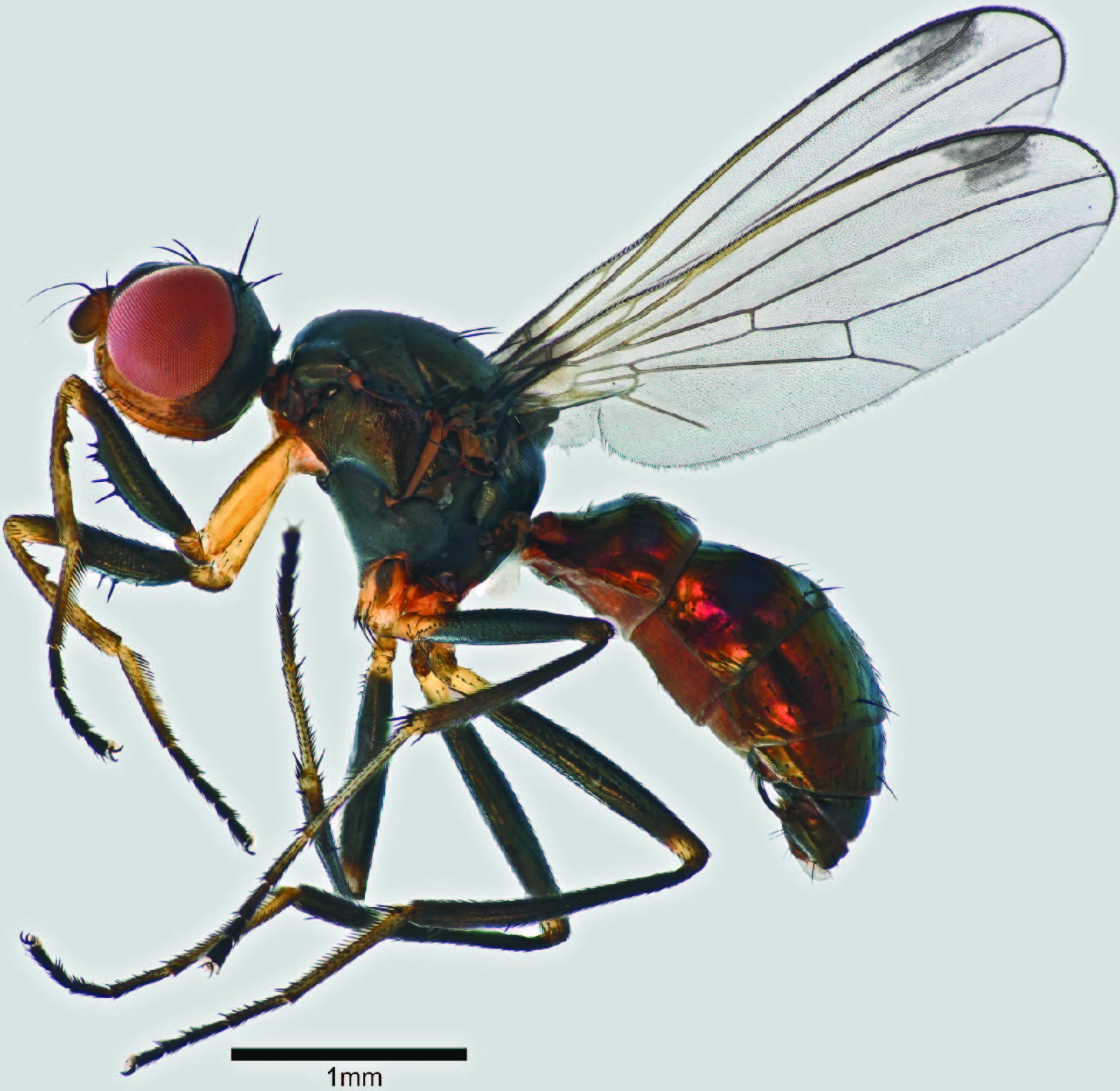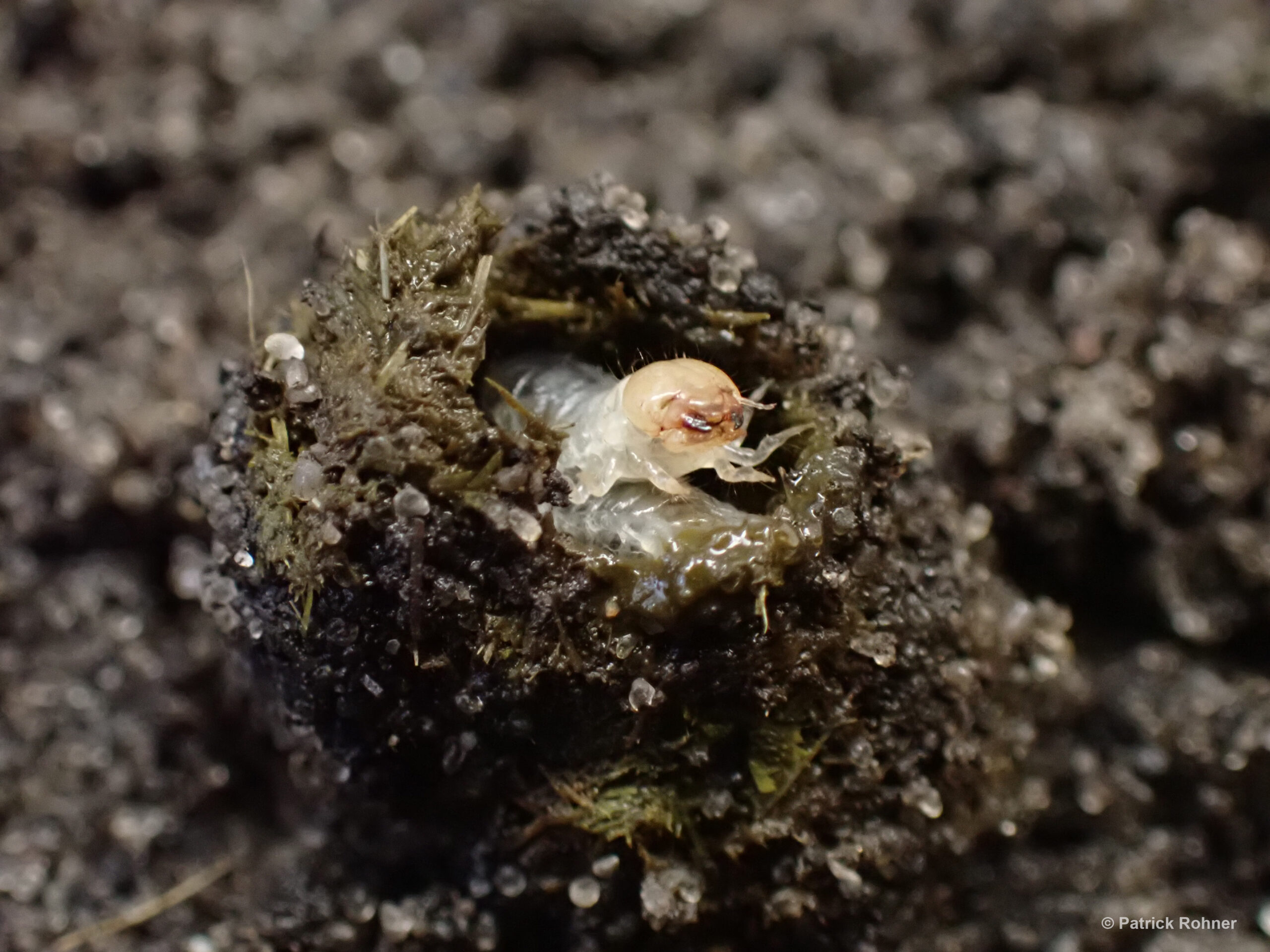Insect Eco-Evo-Devo
The way organisms develop and how they respond to and manipulate their environment has major effects on phenotypes visible to selection. Yet, we are only beginning to understand the intricate role of organismal development in ecology and evolution. Our group integrates concepts and approaches from developmental biology, evolutionary ecology, and genetics to better understand how biological diversity arises and evolves. Focusing on insects, we are especially interested in how plasticity, developmental bias, and organism-environment interactions shape phenotypes and their evolution.

Dung beetles develop exaggerated horns and legs used to compete for mates. We study how the environment shapes trait expression and how this impacts fitness. We also use gene expression knockdowns to study the role of different pathways in the development and evolution of exaggerated traits.
Developmental mechanisms and ecological and evolutionary consequences of developmental plasticity
Organismal development is strongly dependent on the environment an organism experiences, yet the underlying mechanisms and the ecological and evolutionary consequences of plasticity are insufficiently understood. We study the strongly plastic morphology of dung beetles and black scavenger flies to better understand the evolution of, and through, plasticity. We do so by integrating functional genetics and experimental manipulations with geometric morphometrics, and comparative analyses.
selected publications:
-
Rohner et al (2021) Doublesex mediates species-, sex-, environment-, and trait-specific exaggeration of size and shape. Proceedings of the Royal Society .
-
Rohner and Moczek (2020) Rapid differentiation of plasticity in life history and morphology during invasive range expansion and concurrent local adaptation in the horned beetle Onthophagus taurus. Evolution.
The role of developmental variability in evolution
Random environmental and genetic perturbations often lead to non-random effects on phenotypic outcomes. Such developmental variability (or bias) is well established and canonically thought of as a constraint on adaptation, making evolution more likely to proceed in certain directions. However, developmental variability is also a product of evolution and has —at least in theory— the potential to respond to selective forces. Yet, the role that selection plays in shaping the tendency of developmental systems to vary in certain dimensions more so than others remains a controversial question in evolutionary research, with fundamental implications for our view on adaptation. We use dung beetles and dung flies as ideal study systems to advance our current understanding of how developmental variability evolves and whether it constrains or facilitates adaptation.
selected publications:
-
Rohner et al (2022) Developmental bias in the plasticity and evolution of beetle horns. Proceedings of the Royal Society B.
-
Rohner and Berger (2023) Developmental bias predicts 60 million years of wing shape evolution. Proceedings of the National Academy of Sciences.

Sepsid flies develop strongly sexually dimorphic forelegs that males use during mating. We study how developmental variability in foreleg shape impacts evolution on different timescales.

Dung beetle larvae take advantage of their mother’s gut microbiome to digest their hard-to-digest diet. We study the role of these microbes in development and evolution.
Host-symbiont relationships and their contributions to development and evolution
Most animals live in tight association with an entire host of microorganisms. Such symbiotic relationships can affect development and may play a particular role in evolution if symbionts are vertically inherited from parents to offspring. Dung beetles are ideal to study the role of symbionts in development, genetics, and evolution because they pass on symbionts from one generations to the next. For instance, mothers pass on their gut microbiome and symbiotic nematodes to their offspring, making them better at dealing with harsh environmental conditions. We use experimental manipulations of the presence of these symbionts to assess their function in host development and assess their effects on host genetics and evolution.
selected publications:
-
Rohner et al (2024) Plasticity, symbionts, and niche construction interact in shaping dung beetle development and evolution. Journal of Experimental Biology.
Natural history, behavior, and insect diversity
If we want to understand the ecology, behavior, and evolution of organisms, we need a solid understanding of what organisms do in the wild. We are thus also interested in the natural history, species diversity, and behavior of insects. Descriptive observations in the field and under semi-natural conditions in the laboratory are key to develop questions that can then be assessed using a hypothesis-driven framework.
selected publications:
-
Rohner (2022) Secondary sexual trait melanization in ‘black’ scavenger flies: nutritional plasticity and its evolution. The American Naturalist.
-
Blanckenhorn et al (2021) Congruent sexual selection in field and laboratory in closely related sepsid flies. Animal Behaviour.
-
Rohner et al (2015). Distribution, diversity gradients and Rapoport’s elevational rule in the black scavenger flies of the Swiss Alps (Diptera: Sepsidae). Insect Conservation and Diversity.
